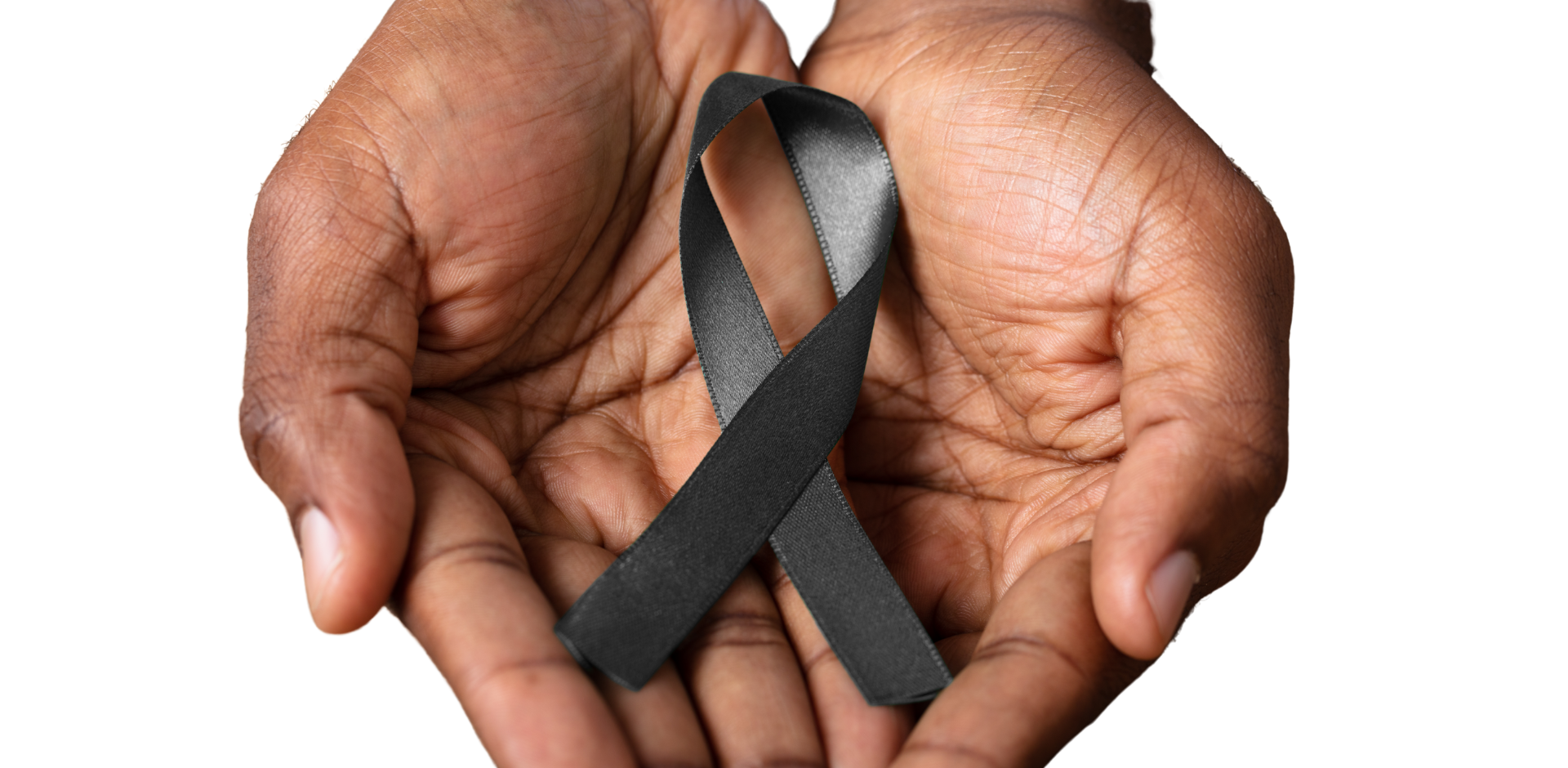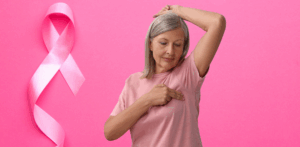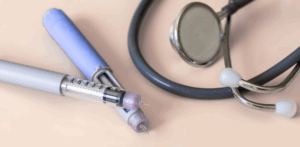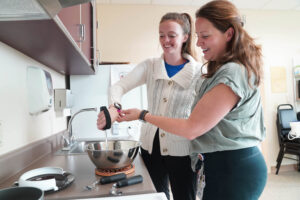One in five people will get skin cancer by the time they are 70 years old (Skin Cancer Foundation). The most common forms of skin cancer are basal cell and squamous cell carcinomas, which start at the outer layer of the skin. Melanoma is cancer that starts in the cells that give our skin pigment. Because skin cancer is on our skin and rarely starts in the body, it’s easier to find and diagnose than other cancers. Skin cancers that are caught early are highly treatable.
Anyone can get skin cancer regardless of race or age, and you can get it anywhere you have skin. Even places that might surprise you like your scalp, the bottoms of your feet, or under a fingernail. It’s important to perform self-skin exams so you can become familiar with your skin and notice any changes. You should also consider seeing a dermatologist once a year for a skin exam, especially if you have a family history of skin cancer, have light colored skin, red or blond hair, light colored eyes, or burn easily.
When performing a self-exam, it’s important to look everywhere, even places you might think don’t get much sun. If you have a partner, they can help check the places that are difficult to see, like your scalp and back. You can also use a mirror or the camera on your phone to check those hard-to-see areas. If you do detect changes in your skin, contact a dermatologist for a formal exam. Skin cancer diagnosis requires a skin biopsy at a dermatologist’s office.
Dermatologists specialize in treating skin conditions and diseases. Ask your primary care team for a dermatology referral.
Checking for Skin Cancer
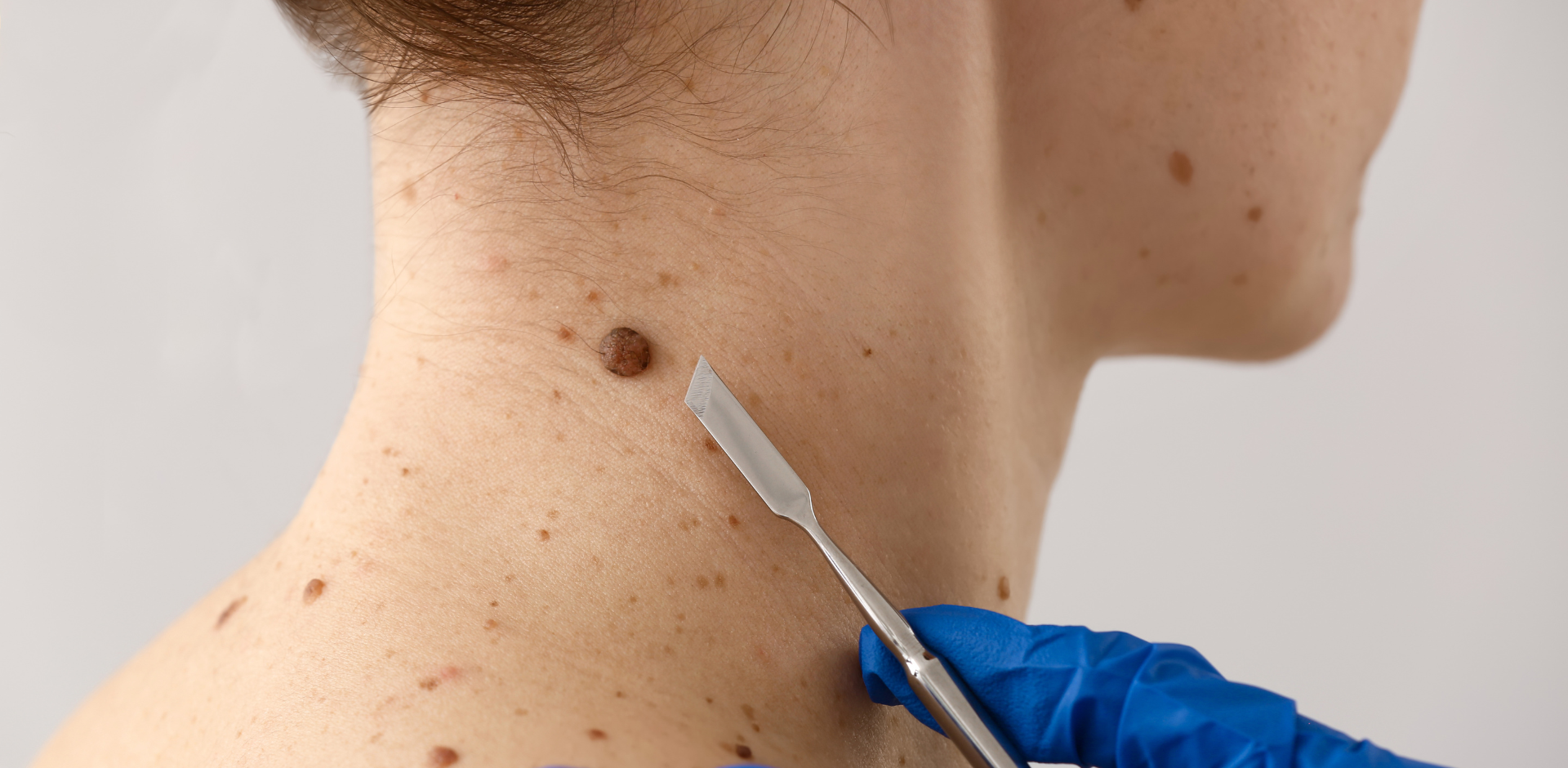
Skin changes to look for:
- A mole that has changed or looks different from your other moles
- Growths on your skin
- Scaly patches
- Sores that don’t heal
- Brown or black streaks under your nail
- Spots that are different from the others, changes, itches, or bleeds
What to check when you perform a self-exam (you should use a mirror or ask a partner to help check the areas that are hard to see)
- Ears, face, neck, chest, belly, and under breasts
- Underarms both sides of your arms, your palms and the top of your hands, in between your fingers, and under your fingernails
- Thighs, shins, top of your feet, the bottom of your feet, in between toes, and under toenails
- Buttocks, genital area, full back, neck, and ears
- Use a comb or hair dryer to part your hair to look at your scalp
Don’t ignore changes in your skin; You can feel okay and still have skin cancer.
For more self-exam resources, check out the Skin Cancer Foundation.
Most people don’t use enough sunscreen.
The average person should apply 2 tablespoons of broad-spectrum, water-resistant sunscreen with an SPF of 30 or higher to fully cover their exposed skin. Larger bodies may need more sunscreen. Reapply sunscreen every two hours.
You should wear sunscreen every day, even if it’s cloudy outside or you don’t expect to spend any time outdoors. The sun is sneaky, and you can get skin damage from inside your car, during a short walk to get the mail, and even while indoors.
Preventing Skin Cancer

Some sun damage is obvious, for example, a tan is a sign that your skin is injured. A suntan is a reaction your skin takes to protect itself from the sun by creating melanin, which is what causes the skin to darken. A sunburn is a reaction to excessive UV exposure that causes immediate damage to your skin cells.
Every time you tan or burn, you are damaging your skin. This damage adds up overtime and makes your skin age faster and increases your risk for all types of skin cancer. But not all sun damage is obvious. You can still damage your skin with sun exposure and not experience a tan or a burn.
Klamath Falls is the City of Sunshine. We get about 300 sunny days a year. Klamath Falls is also a high-desert climate which means we live at a higher altitude, with less cloud cover, and a thinner atmosphere. This can lead to increased sun exposure and an elevated risk of skin cancer for people who live in the area.
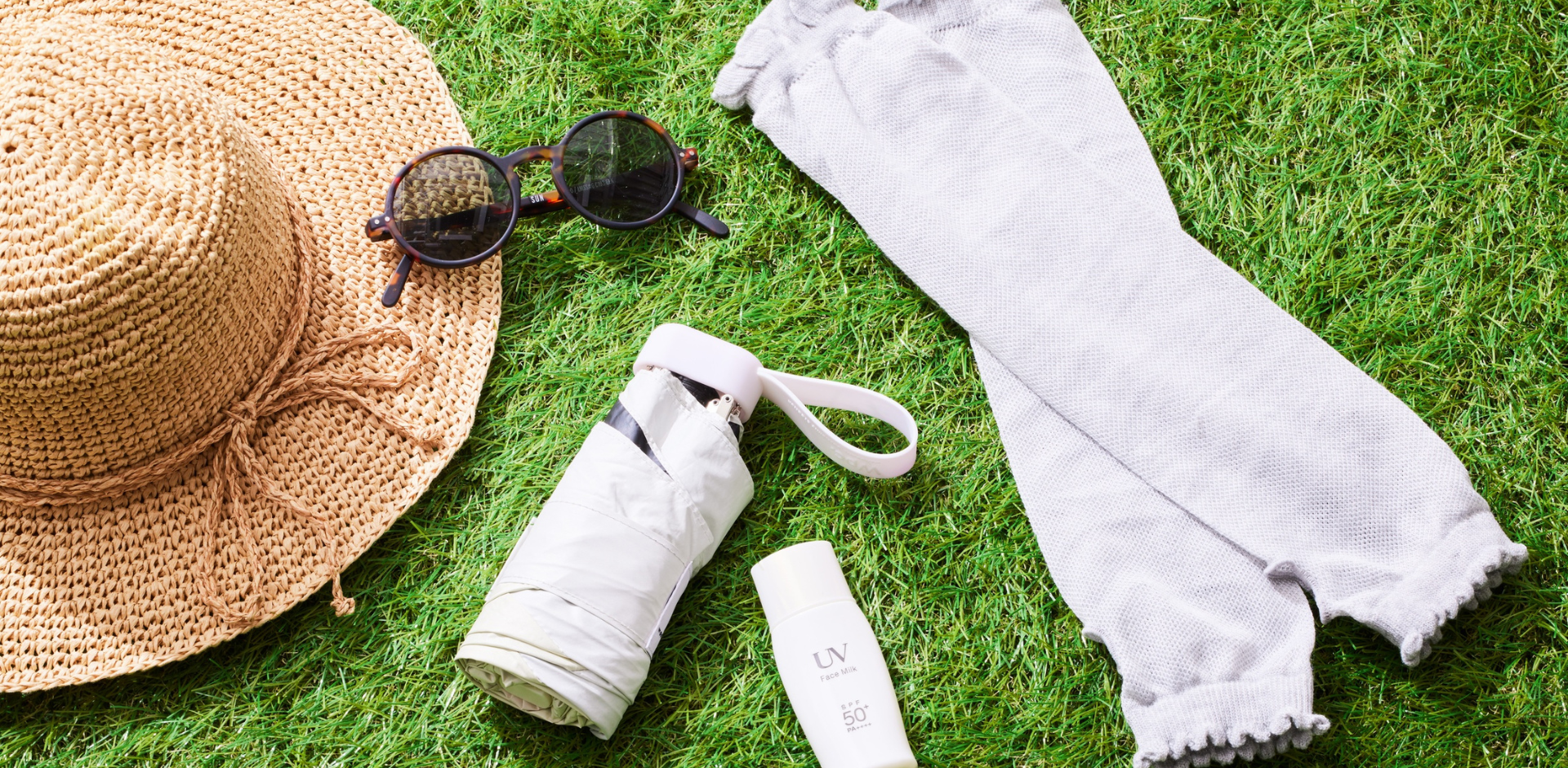
You can protect yourself from skin damage by
- Wearing sun-protective clothing like lightweight and long-sleeved shirts (or UV arm sleeves), pants, wide brimmed hats, and UV protective sunglasses. When purchasing clothing, you can check the tags for the ultraviolet protection factor (UPF) label which offers more effective sun protection than standard clothing.
- Seeking shade during the hottest part of the day, a good rule of thumb is to find some shade if your shadow is shorter than you.
- Use broad spectrum water-resistant SPF of 30 or higher every day, reapply, and don’t forget your feet, neck, ears, and any exposed scalp (like where you part your hair).
- Avoid tanning beds and other products that produce ultraviolet light like UV lamps.
- Perform monthly skin checks and see a dermatologist once a year for an annual skin exam.




